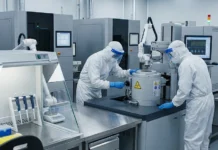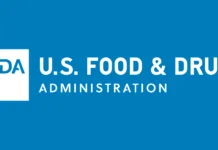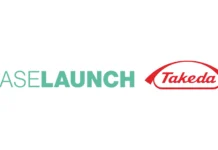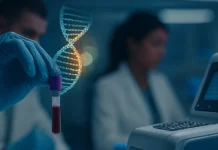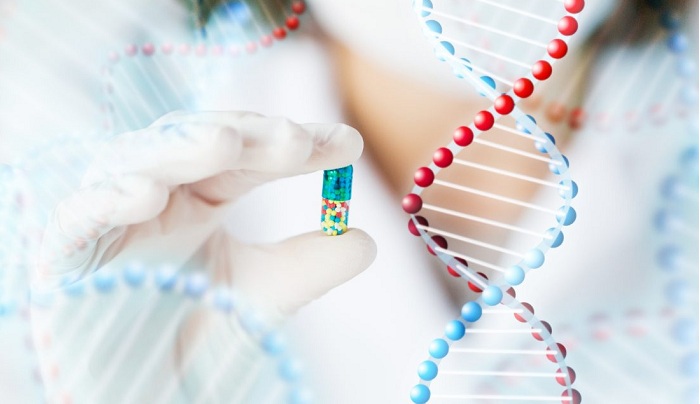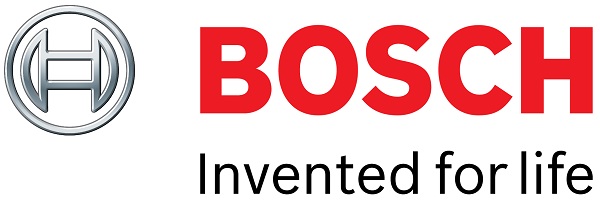“Diagnosis cancer” – this is a life-changing moment for many people. After cardiovascular diseases, cancer remains the next most common cause of death worldwide. In 2012, around 8.2 million people died as a result of cancer. According to the World Health Organization (WHO), this number will continue rising until 2030.
However, recent years have seen a quiet revolution in terms of treatment, with an improved understanding of the molecular biology of tumor cellsleading toincreasing success in addressing thespecific factors that distinguish each patient’s illness.
“Cancer” is not the name of a specific disorder. Instead, cancer is a collective term that describes many different types of malignant new tissue formation.For men, the most common diagnoses involve cancers of the lungs and prostate, while for women, it is breast cancer.And for breast cancerthere are already twenty different subtypes. Malignant tumors occurwhen sections of DNA change, and the body is no longer able to counteract these mutations.Furthermore, the gene repair system becomes increasingly unreliable with age.The overall risk of developing cancer depends on a combination of hereditary factors, lifestyle habits and environmental influences. This includes things like smoking, excess weight, high exposure to UV radiation, certain viruses and inhaled particulates. Therefore, cancer can be ultimatelyunderstood as a collection of different mutations. As a result, the best chance of success is generally foundin combining different treatments, whether in parallel or sequentially.
Chemotherapy – an optimized basic treatment
In terms of treatment, the conventional triad of drug therapy, radiation sessions and surgical interventionrepresentsa strenuous but proven course of action, and is generally successful. While radiation therapy uses ionizing radiation to completely deactivate or at least diminish the tumor, chemotherapy relies on the administration of cytostatic drugs to inhibit cell growth and deactivate dispersed tumor cells. The exact treatment plan depends on the tumor’s specific characteristics, the patient’s generalconditionand the stage of the disease.
Chemotherapyis used in many cases– mainly by infusion, although certain cytostatic drugs are also suitable for oral administration.Since researchers have tested and re-combinedproven activeingredients in different dosages, as well as created new combinations and introduced new substances, today’s chemotherapy is frequently achieving good results at higher tolerance. While conventional chemotherapy still remains the focus of treatment in emerging countries, itis now increasingly combined with new, highly targeted therapies in the industrial world.
Revolution in cancer treatment
The understanding of the molecular biology of tumor cells has considerably deepened in recent decades.Scientific knowledge of how the immune system reacts to cancer is also continually increasing.As a result, researchers have become ever more capable of developing therapeutic approaches that can betailored to each patient, using new points of attack.Above all, this involvestargeted or molecular cancer drugs.Unlike cytostatic drugs, which function as cellular toxinsthat attack not only tumor cells but also healthy cells that divide quickly, the drugs of targeted therapies take aim at tumor-specifictraits.
The cell division of healthy people is strictly regulated. A cell is only reproduced when it receives the appropriate signal.There are receptors on the cell surface that project into the interior, providing exterior docking sites for the signaling molecule.In cancer cells, however, mutations disrupt this regulated balance between growth, division and cellular death. The cell receives a continuous signal to divide.Modern cancer therapies act on the molecular foundations of this defective signal transmission.
Here, enzymes known as kinases play an important role.Researchers have developed small-molecule agents called kinase inhibitors that work by blocking the action of one or more kinases.As tiny signaling molecules, they bind to part of the receptor inside the cell and thus interrupt the signal cascade that leads to cell division. These therapies slow down cell growth significantly. The first approved compound in this class was imatinib, which is used particularly for the treatment of chronic myeloid leukemia. Its great success has spurred further research, with many kinase inhibitors currently on the market orin clinical trials.Most kinase inhibitors are administered orally in the form of capsules or tablets, sometimes employing extremely complex formulations.Other injection-based targeted therapies such as thosewith cytokines (particularly interferon and interleukin)tackle the mediators between cells, thereby also affecting cell growth.
Angiogenesis inhibitors cut blood supply
Angiogenesis inhibition is the process of starving the tumor by antibody action. In order to survive, cancer cells need oxygen and nutrients delivered by red blood cells. After reaching a certain size – around that of a pinhead – a solid tumor will need newly formed blood vessels for its continued growth.Since the tumors themselves pull in new blood vessels to secure their own supply, cancer researchers have turned their attention to this blood vessel formation process, known as angiogenesis. With antibodies that bind to vascular endothelial growth factor (VEGF), angiogenesis inhibitors try to retard blood flow, thereby shrinking the tumor or at least curbing its growth.This therapy is used particularly for breast, colon and ovarian cancer.It has been shown that for women with advanced ovarian carcinomas, progression-free survival is significantly prolonged by angiogenesis inhibitors.
Some tumors depend on the body’s own hormones for growth. For some time now, hormone-responsive tumors have also been treated with targeted therapiesusing hormone supplementation, hormone receptor antagonists and/or hormone synthesis inhibitors. In the case of breast cancer, the prognosis for hormone-responsive tumors is generally good.Also for men with prostate cancer, anti-hormone therapy is often an effective way to retard tumor growth.
New medications direct immune system against cancer
Using the still relatively new technique of immunotherapy, the body’s own immune system is stimulated to fight against tumor cells.Here, tissue cultures infermentation chambersare used to produce monoclonal antibodies that can attach themselves to the characteristic structures (antigens) on the tumor surface. This allows them to act on various tumor mechanisms – for example inhibiting cell proliferation (uncontrolled cell growth) or inducing cell death.Since antibodies are complex protein structures that are digested and destroyed by the gastrointestinal tract, this therapy is administered via infusion.
Recently, particular attention has been given to monoclonal antibodies in the context of checkpoint inhibition. To protect the body against autoimmune reactions that would destroy its own tissues, the immune system is equipped with checkpoint moleculesthat prevent anoverreaction of the immune system. Checkpoint inhibitors are used to turn off the checkpoint mechanism, thereby opening the way for the immune system to fight the tumor. In 2011, ipilimumab became the first checkpoint inhibitor approved for the treatment of advanced malignant melanomas. The academic journal Sciencedeclared checkpoint inhibitionthe Breakthrough of the Year 2013.
According to the latest research, checkpoint inhibitors are most suitable for patients whose immune systems had already reacted to the tumor even before treatment. Checkpoint inhibitors are effective in some20percent of treated patients. In these cases, they significantly increased the reaction of T cells against the tumor.As a result, the long-term survival rate of patients with malignant melanomas was increased by around 20 percent. In addition, there now is clinical study data on the effectiveness of checkpoint inhibitors in treating non-small cell lung carcinomas and urological tumors.Research results suggest the emergence of a large new market here. In addition to ipilimumab, the US Food and Drug Administration (FDA)also approved pembrolizumab in the fall of 2014 as yet another immunotherapy agent for the American market.
Augmenting chemotherapeutic agents with antibodies
Antibodies can also be used toaugment the effects of other cancer medications. With a new class of high-grade biopharmaceuticals known as antibody-drug conjugates, a particular drug is coupled to an antibody, which then attaches itself to a specific target structure, for example an antigen on the surface of a tumor cell.This allows cytostatic drugs to take effect at a very precisely targeted location.Applying nanotechnology to cancer treatments is yet another way to facilitate the targeted transport of active ingredients, thereby reducing side effects.
An indispensible component of the overall treatment is the use of supportive medications. It is no longer conceivable to use chemo, radiation or even modern immunotherapy without supplemental drugs to address the general symptoms of the disease as well as the side effects of the treatment. This includes antiemetics, painkillers and antibiotics, as well as hematopoietic growth factors. These supportive therapies generate billions in turnover for the pharmaceutical industry, and will become even more important with the increasingly customized therapies of the future.
Growing market for companion diagnostics
The overall trend is clearly towards individually tailored therapies that use new diagnostic techniques to evaluate the precise needs of the patient and specific characteristics of the tumor before assembling a coordinated combination of high-grade medications. This means that another major focus of drug development is now on companion diagnostics, as a way to verify effectivenessfor each individual patient before treatment begins.This is also indispensable because of the need to control expenses in the healthcare sector, since some therapies can entail medication costs in the five-figure range, and the relevant budgets make no allowance for their inefficacy.
For example, to test the efficacy of the trastuzumabmonoclonal antibodyin apatient with breast cancer, a biomarker test is used to diagnose overexpression of the HER2 receptor. Because regulatory bodies like the FDA are increasingly requiring the use of companion diagnostics for certain therapeutic agents, the global market for companion diagnostics could grow by almost 20 percent annually, reaching an estimated 3.5 billion US dollars in 2020. As a result, pharmaceutical companies are developing corresponding tests for existing therapies as well as new medications. This also means that pharmaceutical companies are cooperating ever more closely with manufacturers of laboratory diagnostics and medical devices.
The trend towards increasinglyspecialized therapies means that clinical studies have smaller and smaller pools of potential patients, so that the line between drug development and patient treatment is becoming increasingly blurred.Known as “translational medicine”, this field presents immense challenges, but also holds great potential for successfully fighting tumors previously considered difficult to treat.The great efforts of medical researchers and the pharma industry to develop new, highly effective and increasingly targeted tumor therapies will transform the image of cancer – from a death sentence to a serious but manageable chronic condition.
Fighting cancer with technologies from Bosch
The portfolio from Bosch Packaging Technology is suited for nearly all forms of oncological drug development, production and filling. Devices for the biopharmaceutical production of monoclonal antibodies and antibody-drug conjugates are among the core process competencies of the Bosch subsidiary Pharmatec. The production of antibodies requires a multi-stage process. Firstly, the cells are cultivated in increasing scaling steps and harvested (upstream process). The active ingredients are then separated and purified using different technologies, followed by the formulation of the final injection solution (downstream process).
For sterile filling of oncology compounds, filling lines can be combined with barrier systems to protect operators from highly potent active agents such as cytostatic drugs, while ensuring the highest possible quality. Oral cytostatic drugs such as the active ingredient Imatinib can be processed on capsule filling machines and tablet presses from Bosch, which in conjunction with containment systems protect the operators from product dust. The capsule is particularly suited for precise filling of different combinations and dosages of active ingredients in targeted, individual therapies. Bosch also offers machines for all laboratory process steps for both liquid and solid pharmaceuticals.
Contact
Dr. Johannes Rauschnabel
Chief Pharma Expert
Bosch Packaging Technology
E-Mail: johannes.rauschnabel@bosch.com.
About the author
Johannes Rauschnabel, PhD, is Chief Pharma Expert at Bosch Packaging Technology. He is a graduated Chemist from Eberhard-Karls-University Tuebingen and has more than 25 years of experience in research and development and 15 years in the pharmaceutical industry as a product manager for Barrier Systems and as Director Process Engineering. Johannes Rauschnabel is a frequent speaker at conferences, a lecturer at University of Hohenheim and an author of multiple scientific papers and patents.
About Bosch Packaging Technology – product division Pharma
Bosch Packaging Technology – product division Pharma is one of the leading providers of process technology and packaging solutions for the pharmaceutical industry. The portfolio includes single units, complete lines and integrated systems for the manufacturing and processing of liquid and solid pharmaceuticals. It also includes process technology, primary packaging, inspection technology for different application fields and packaging types. Secondary packaging with qualification and validation, software solutions for track and trace and technical customer service are also available.
The following product brands are part of the Bosch portfolio for the pharmaceutical industry: Hüttlin, Klenzaids, Manesty, Moeller&Devicon, Pharmatec, SBM Schoeller-BleckmannMedizintechnik, Sigpack and Valicare.For more information, please visit www.boschpackaging.com.



